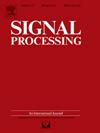利用受 HVS 启发的信道建模和以感知为导向的能量分配优化,实现内容自适应 JND 配置文件
IF 3.4
2区 工程技术
Q2 ENGINEERING, ELECTRICAL & ELECTRONIC
引用次数: 0
摘要
现有的 "明显差异"(JND)模型考虑了各种协变量的影响,但很少考虑协变量之间的融合关系,即缺乏对视觉感知机制的整体理解,忽视了能量消耗对视觉感知的重要影响。事实上,视觉感知也不例外,神经活动与能量供给密不可分。基于这一认识,本文提出了一种采用内容自适应能量分配的新型 JND 估算模型。首先,通过将人类视觉系统(HVS)概念化为一个信息交流框架,将信息理论应用于视觉感知系统。然后,本文利用能耗与信息感知之间的关系,将 HVS 能耗作为统一指标进行量化测量,以描述复杂而异构的 HVS 感知过程,并通过融合底层和语义层特征构建 JND 模型。大量仿真结果验证了所提出的 JND 模型与其他前沿模型相比具有明显的竞争力,并与 HVS 高度兼容。本文章由计算机程序翻译,如有差异,请以英文原文为准。
Content adaptive JND profile by leveraging HVS inspired channel modeling and perception oriented energy allocation optimization
The existing just noticeable difference (JND) models consider the effects of various covariates, however, they rarely account for the fusion relationship between the covariates, i.e., they lack a holistic understanding of the mechanisms of visual perception and disregarding the significant impact of energy consumption on visual perception. In fact, visual perception is no exception to the rule that nerve activities and energy supply are inextricably linked. Based on this insight, this paper proposes a novel JND estimation model employing content-adaptive energy allocation. Primarily, the information theory is applied to the visual perception system by conceptualizing human visual system (HVS) as an information communication framework. Then, leveraging the relationship between energy consumption and information perception, this paper quantitatively measures the HVS energy consumption as uniform metric to describe the complicated and heterogeneous HVS perception process, and then construct JND model by fusing low-level and Semantic-level features. Numerous simulation results verify that the proposed JND model is significantly competitive with other frontier models and highly compatible with HVS.
求助全文
通过发布文献求助,成功后即可免费获取论文全文。
去求助
来源期刊

Signal Processing
工程技术-工程:电子与电气
CiteScore
9.20
自引率
9.10%
发文量
309
审稿时长
41 days
期刊介绍:
Signal Processing incorporates all aspects of the theory and practice of signal processing. It features original research work, tutorial and review articles, and accounts of practical developments. It is intended for a rapid dissemination of knowledge and experience to engineers and scientists working in the research, development or practical application of signal processing.
Subject areas covered by the journal include: Signal Theory; Stochastic Processes; Detection and Estimation; Spectral Analysis; Filtering; Signal Processing Systems; Software Developments; Image Processing; Pattern Recognition; Optical Signal Processing; Digital Signal Processing; Multi-dimensional Signal Processing; Communication Signal Processing; Biomedical Signal Processing; Geophysical and Astrophysical Signal Processing; Earth Resources Signal Processing; Acoustic and Vibration Signal Processing; Data Processing; Remote Sensing; Signal Processing Technology; Radar Signal Processing; Sonar Signal Processing; Industrial Applications; New Applications.
 求助内容:
求助内容: 应助结果提醒方式:
应助结果提醒方式:


